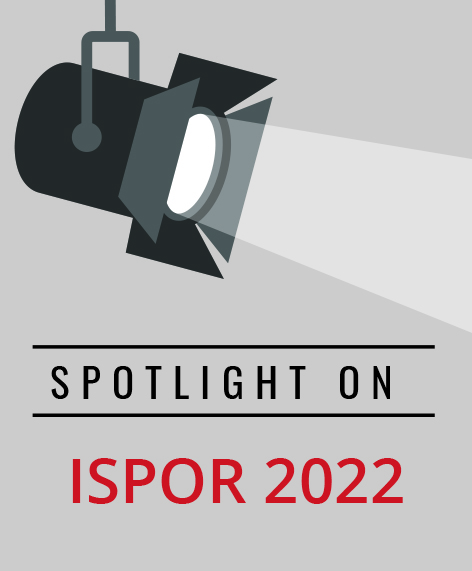Emerging Methods in Economic Evaluations
Chintal H. Shah, MS, BPharm, University of Maryland, Baltimore, MD, USA
In this podium presentation session, the panelists shared methods of economic analyses that have been emerging recently. These methods included the use of cost-disutility planes, potential ways to incorporate the societal perspective in economic analyses where there is a lack of data on societal cost inputs, a cost-effectiveness study in the genetic testing landscape, and evaluation of how health technological assessment bodies are responding to the challenges in the assessment of cell and gene therapies.
Elizabeth Beaulieu, PhD, MS, (Harvard Medical School, USA) presented work she and her colleagues did that focused on cost-disutility analysis (C-DU), which is an alternate method of cost/effect visualization to compare various interventions. This method was introduced and presented using a numerical example wherein she walked through a scenario comparing a variety of treatment options for opioid use disorder: clinic-based methadone (MC), office-based methadone (MO), and office-based buprenorphine (BO). In C-DU, the intervention with the lowest cost is used to determine the incremental cost and the one with the highest effectiveness is used to determine the incremental effect for each of the alternatives. In the corresponding C-DU plane, the X-axis represents the incremental effect (relative to highest effect) and incremental cost (relative to lowest cost) of each intervention.
The differences in the presentation of C-DU and traditional CE were also examined (Figures 1 and 2). Beaulieu visually went over the process of calculating the technical and economic efficiency metrics. She noted, “C-DU has the interesting and useful ability of being able to draw efficiency frontiers and can calculate efficiencies of alternatives.” The technical efficiency can be calculated for each alternative and consequently the degree of dominance can be estimated (=1-technical efficiency). Economic efficiencies are similar to technical efficiencies but depend on the choice of a willingness-to pay-threshold. Some of the advantages of C-DU include the removal of potential ambiguity based on the reference intervention and quadrant, and the use of standardized efficiency measurements. One potential barrier to the utilization of these methods is the fact that they are not very commonly used; hence, there may be a lack of familiarity among readers.
Figure 1. Cost-effectiveness plane.
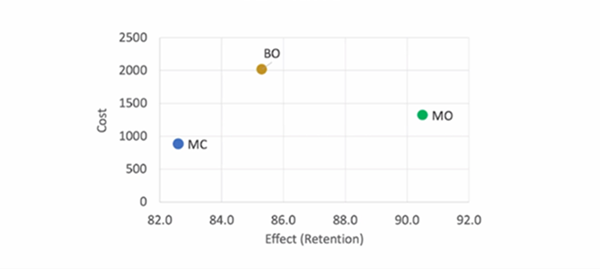
Figure 2. Cost-disutility analysis plane.
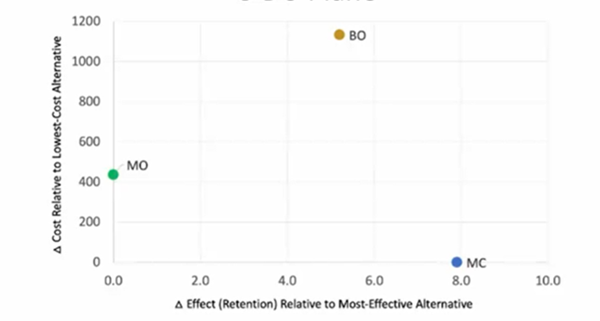
Marina Richardson, PhD, MSC, BSc (Institute for Clinical and Economic Review, Toronto, Canada Institute for Clinical and Economic Review, Canada) for presented a study in which she and her colleagues examined a potential method to deal with perhaps the biggest barrier to the conduct of economic studies from a societal perspective: lack of data on the cost components included in an economic analysis from a societal perspective (Figure 3). This method rests on the underlying hypothesis that there is a relationship between the healthcare gains from a treatment from the healthcare sector and nonhealthcare perspective (higher healthcare sector costs should incur higher nonhealthcare costs as well).
Figure 3. What information do we need to estimate costs from the societal perspective?
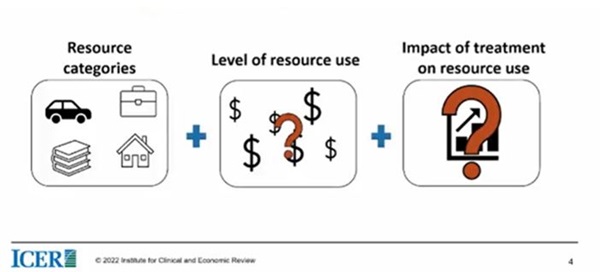
In order to quantify this relationship, 8 ICER reviews (28 comparisons) were included in their final analysis. Of these reviews, 8 reported labor market earnings lost, while 1 each included unpaid caregiver time costs, unpaid household production costs, and housing modification costs. Their results suggest that for every additional lifetime discounted QALY gained, incremental nonhealthcare societal cost savings increased by $11,720 (2021 USD) on average (range: $5,991 to $113,551). These costs may be underestimated and are based on a small sample size but have the advantage that they do not need additional analyses as QALY is a common output from economic analyses.
Deo Mujwara, PhD (Analysis Group, USA) presented their study wherein he and coauthors examined the cost-effectiveness of using genetic testing (polygenic risk score [PRS]) to determine the risk of atherosclerotic cardiovascular disease (ASCVD) for patients with coronary artery disease. Pooled-cohort-equations are the standard of care for determination of the risk of ASCVD, and PRS for coronary artery disease is a genetic testing based ASCVD risk prediction tool. They applied a Markov model (Figure 4) on a 40-year cohort with borderline/intermediate 10-year risk of ASCVD to examine the cost-effectiveness of addition of PRS to the traditional testing method. They found that implementation of PRS for coronary artery disease in the pooled-cohort-equations to determine the risk of ASCVD reduced the mean cost per person screened, improved QALYs and averted future events of coronary artery disease and ischemic stroke versus pooled-cohort-equations alone. One of the assumptions of the model was that genetic testing hesitancy was not a concern, and perhaps real-world data has the potential to help address this limitation.
Figure 4. Simplified Markov model schematic.
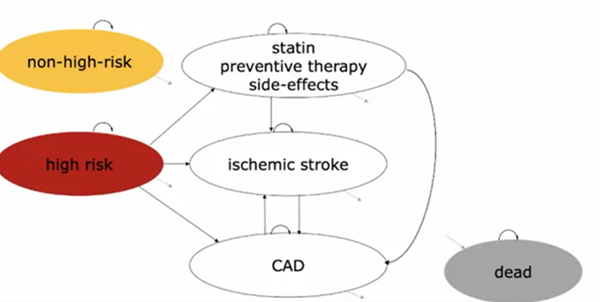
The final speaker, Michael F. Drummond, MCom, DPhil (University of York, UK), presented a study that assessed how health technology assessment (HTA) bodies are responding to the challenges posed by cell and gene therapies. In order to do so, the authors evaluated the HTA reports from various countries for a number of cell and gene therapies (Figure 5). In addition, they extracted information on the contents of these reports and made inferences on the type of reporting as well as the views of these HTA bodies on these reports.
Figure 5. HTA reports analyzed.
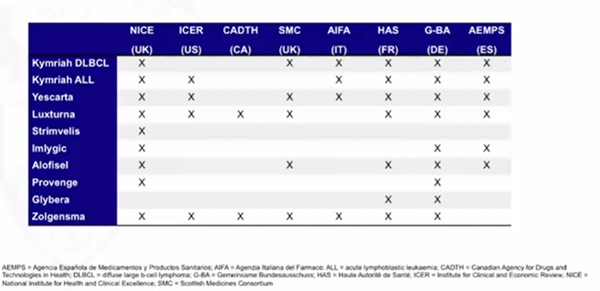
In total, 31 HTA reports were analyzed and the authors found that the main areas where further initiatives are required included the validation of surrogate endpoints, the criteria for accepting single arm clinical studies, the assessment of family and scientific spillovers, estimating insurance value, exploring scenarios using different discount rates, and the use of alternative payment models to reduce uncertainty. Further, while the HTA bodies consider a number of characteristics in their evaluations, there exists a degree of variability in the reporting. A potential reason for this variability stated was that different HTA bodies have differing priorities and considerations (eg, the German HTA body may not focus on economic evaluations). This varying priority may be a potential barrier to the standardization of reporting for HTA of cell and gene therapies.

